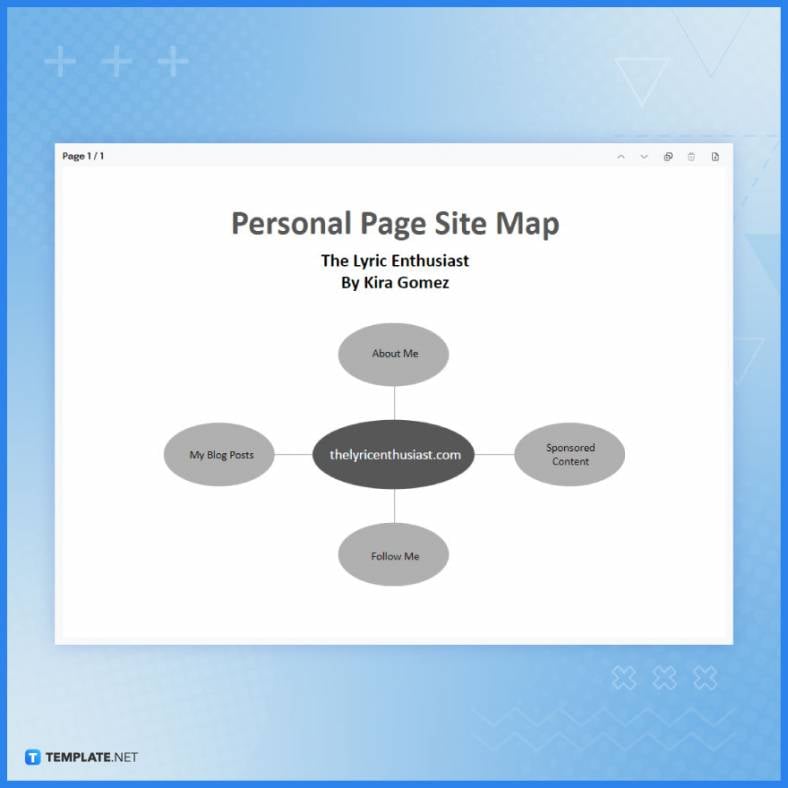Table of Contents
Sitemap
A Sitemap is a blueprint of your website, enabling search engines to navigate through your site’s content efficiently. Leveraging our artificial intelligence (AI) tools, you can now generate precise and functional sitemaps, laying the foundation for an organized online presence.

What Is a Sitemap?
A sitemap is an organized model of a website’s content, designed to help search engines like Google understand the structure of your site. Think of it as an index or map that guides search engines to all of your valuable pages, ensuring they are discovered and indexed correctly. Creating a sitemap can be done manually or by using AI tools to automate the process.
Sitemap Uses, Purpose, Importance
A sitemap communicates with search engines, providing them with a hierarchy of your website’s pages. It’s crucial for SEO because it makes it easier for Google to find all of your content, especially if your site is large or has a significant number of archives. Recognizing the importance of a sitemap is essential for any website owner or SEO specialist aiming to improve their site’s visibility and ranking.
How to Generate a Professional Sitemap with AI?
The rise of AI technology has introduced new methods for creating sitemaps efficiently and effectively. Platforms such as Template.net offer intuitive tools to aid users in crafting a sitemap.
Start by listing your website’s main sections and categories, and then define the hierarchy of your pages and how they are interlinked. Provide the list and information to the AI, which will analyze and organize your content into a structured sitemap.
After the AI generates the sitemap, review and adjust it to ensure it meets your website’s specific needs and maximizes your SEO efforts.
Sitemap Example
Sitemaps can differ based on the website’s size, complexity, and the type of content offered. Nonetheless, the underlying structure of a sitemap should be straightforward to navigate. If you’re finding the creation of this SEO cornerstone challenging, here is an example of how an AI-generated Sitemap can assist.
A sitemap is inherently graphical, as it presents a model of flow or process using shapes, lines, and visuals. Take, for example, this personal page sitemap for the website thelyricenthusiast.com. At the heart of the diagram lies the homepage URL, branching out to different site sections like ‘About Me,’ ‘My Blog Posts,’ ‘Sponsored Content,’ and ‘Follow Me.’
Like UI/UX designs, AI-generated sitemaps aim to bring order and clarity to your website’s structure. They help ensure that search engines can crawl your website more intelligently, which in turn can help improve page indexing. Consequently, this aids in propelling your website’s ranking potential. By providing a clear and logical pathway for search engines, our sitemap templates help establish a robust online framework.
FAQs
What is a sitemap?
A sitemap is a file that lists all the important pages of your website to inform search engines about the site structure.
Why is a sitemap important for SEO?
Sitemaps facilitate search engines in crawling and indexing your website, potentially improving its visibility.
How often should I update my sitemap?
Update your sitemap whenever new content is added, removed, or changed on your website.
Do all websites need a sitemap?
While not mandatory, a sitemap is highly recommended, especially for larger websites or those with a significant amount of rich media content.
Can a sitemap improve my website’s ranking?
A sitemap alone doesn’t improve rankings but it helps search engines index your content, which is foundational to ranking.
How do I submit my sitemap to search engines?
You can submit your sitemap to search engines through their respective webmaster tools, such as Google Search Console.
What is the difference between XML and HTML sitemaps?
XML sitemaps are for search engines to crawl, while HTML sitemaps are designed to help users navigate your website.
How many URLs can I include in a sitemap?
An XML sitemap can include up to 50,000 URLs.
What if my sitemap is too large?
For a large sitemap, you can create multiple sitemap files and link them with a sitemap index file.
Does a sitemap affect user experience?
Directly, no; however, by aiding search engines, a sitemap indirectly contributes to ensuring that users find the relevant pages they are searching for.







